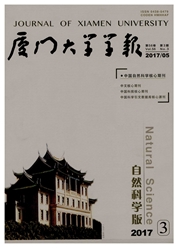

 中文摘要:
中文摘要:
以红树林湿地先锋树种白骨壤为研究对象,通过镉胁迫时施加阳离子通道抑制剂(LaCl3)和根系分泌物类黄酮,检测类黄酮对白骨壤根系阳离子通道吸收镉的影响与根系中重金属镉的累积效应.结果表明:随着镉含量的升高,阳离子通道对镉吸收的贡献率逐渐减小;早期白骨壤根系对镉的吸收以消耗能量的阳离子通道主动运输为主,贡献率最高可达78.7%;类黄酮作为镉离子载体,与镉螯合或络合,减小了阳离子通道对根系镉吸收的贡献率,有利于根系对植物生长必需元素的吸收,并减轻重金属毒性.因此,根系分泌类黄酮能够增强植物对重金属的耐受性,对植物起到保护作用.
 英文摘要:
英文摘要:
The pioneer specie of Avicennia marina was investigated. The cation channel inhibitor (LaCl3 )and the root exudate flavonoids were used to treat plants by Cd.The effect of flavonoids on Cd absorption by cation channels and the bioaccumulation of Cd were detected in Avicennia marina root.The results show that the contribution of cation channels to Cd absorption is decreased with the increasing of Cd content.The absorption of Cd by cation channels with expending energy is the main way in the early stage for Avicennia marina root,and the maximum contribution rate was 78.7%.As the carrier of Cd, flavonoids with chelation/complexation can impede the contribution of cation channels to Cd absorption, which benefites the absorption of essential elements for plant growth in roots and alleviates the phytotoxicity of heavy metals.Flavonoids from root exudate can enhance the heavy metals tolerance of plant and protect plants.
 同期刊论文项目
同期刊论文项目
 同项目期刊论文
同项目期刊论文
 期刊信息
期刊信息
